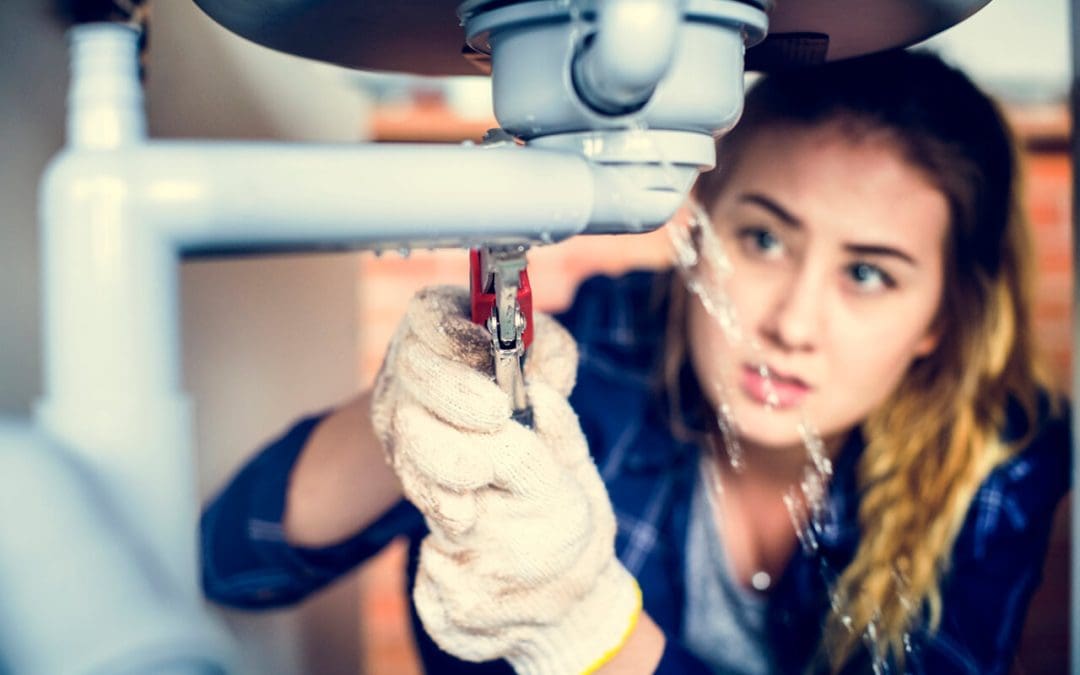Plumbing issues are inevitable, but they don’t always require a call to the professionals. Some of the most common problems can be tackled with a little know-how, a few basic tools, and patience. From dripping faucets to clogged drains, here’s how to fix common plumbing problems quickly and efficiently.
Fixing a Dripping Faucet
That persistent drip is annoying and wastes water, increasing the utility bill. A worn-out washer or O-ring is usually to blame. Start by turning off the water supply to the faucet. Next, disassemble the handle and remove the old washer or O-ring. If it looks cracked or misshapen, replacing it with a new one should stop the leak. Once everything is reassembled, turn the water back on and test the faucet. If the drip persists, the valve seat may need cleaning or replacing.
Fix Common Plumbing Problems: Unclogging a Slow or Blocked Drain
A slow-draining sink or bathtub is frustrating, but a simple fix is often within reach. Hair, soap scum, and debris are common culprits. Start by removing visible gunk with gloved hands or a drain snake. If the clog is stubborn, pour a mixture of baking soda and vinegar down the drain, let it sit for about 15 minutes, then flush with hot water. If the issue persists, a plunger or drain auger will help break up the obstruction further down the pipe.
Stopping a Running Toilet
A constantly running toilet wastes gallons of water and drives up the water bill. The problem usually lies with the flapper, fill valve, or float. Remove the tank lid and inspect the flapper. If it’s worn or not sealing properly, replacing it is an easy fix. If the float is too high, adjust it so that the water level stays about an inch below the overflow tube. If the fill valve isn’t shutting off, replacing it should do the trick.
Fixing Low Water Pressure
Low water pressure makes using the sink and showering frustrating. Mineral buildup in aerators or showerheads is often the cause. Unscrew the aerator or showerhead and soak it in vinegar for a few hours to dissolve deposits. If the issue isn’t localized to a single fixture, check for a partially closed shut-off valve or a hidden leak in the plumbing system. If those aren’t the problem, it’s time to inspect the pressure regulator.
Fix Common Plumbing Problems By Repairing a Leaky Pipe
If left unchecked, a leaky pipe quickly becomes a major issue. If there’s a small leak, shutting off the water supply and applying plumber’s tape or a pipe repair clamp will provide a temporary fix. For a slightly larger leak, epoxy putty can seal the area until a permanent repair is possible. If the pipe is corroded or damaged extensively, replacement is the best option. Always check surrounding areas for water damage to prevent mold growth and further issues.
Freshen up the Garbage Disposal
A smelly garbage disposal can make the whole kitchen unpleasant. Cleaning it regularly keeps odors at bay. Running ice cubes and rock salt through the disposal can help remove built-up gunk. Adding a mixture of baking soda and vinegar, letting it sit, then rinsing it with hot water eliminates foul smells. Grinding citrus peels provides a fresh scent and keeps blades clean. If odors persist, removing the rubber splash guard and scrubbing underneath may reveal hidden grime.
Silencing Banging Pipes
Loud, banging pipes, often referred to as water hammer, occur when water flow suddenly stops, causing a shockwave in the plumbing system. Installing a water hammer arrestor or securing loose pipes with brackets can often resolve the issue. If the noise continues, draining the plumbing system and refilling it slowly will help prevent pressure buildup that leads to banging sounds.
Plumbing problems don’t have to be a nightmare. With the right approach, many issues can be handled quickly and efficiently without calling a plumber. Keeping an eye on minor issues before they become major problems saves time, money, and headaches in the long run.
How to Fix Common Plumbing Problems FAQs
What’s the best way to prevent clogged drains?
Avoid dumping grease, coffee grounds, or food scraps down the kitchen sink. Use drain strainers in sinks and showers to catch hair and debris.
Why does the water heater make a rumbling noise?
Sediment buildup at the bottom of the tank is likely the issue. Flushing the water heater once a year removes sediment and improves efficiency.
How often should plumbing maintenance be done?
Checking for leaks, cleaning drains, and inspecting pipes every few months helps catch problems early. An annual inspection by a professional keeps the entire system in good shape.
Can chemical drain cleaners damage pipes?
Yes. Harsh chemical cleaners will erode pipes over time. Natural alternatives like baking soda and vinegar or mechanical tools like drain snakes are safer options.
Why does the toilet gurgle when flushing?
A gurgling toilet usually indicates a clog in the drain line or a blocked vent pipe. A plunger or plumbing snake can clear minor clogs, but professional help may be needed if the issue continues.
Crossroads Home Inspections offers inspection services, including pre-listing home inspections to customers in St. Louis and the surrounding area. Contact us to request an appointment.

